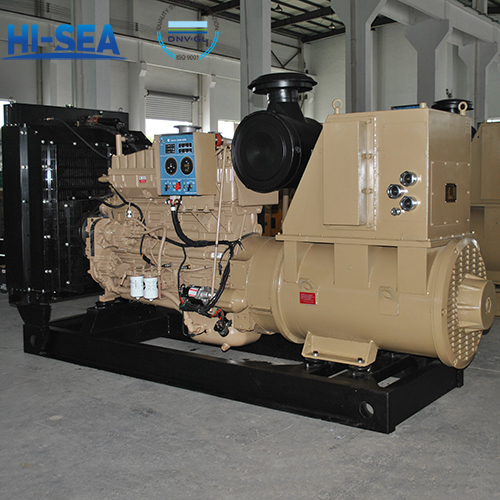
Monitoring of alternator operation of marine generator set
The alternator in the operating marine generator set should be continuously monitored according to the instrument indications on the distribution board, to timely detect abnormal phenomena, eliminate hidden dangers, and ensure the normal power supply of the ship. Monitoring the alternator operation of a marine generator set is crucial for ensuring the reliable performance and safety of the electrical power generation onboard.
Overview
1. Monitoring of alternator temperature rise
During the operation of the alternator, the temperature will increase due to factors such as copper loss, iron loss, and mechanical loss. The actual temperature of each part of the generator is equal to the sum of the temperature of the cooling medium and its temperature rise on the cooling medium. Excessive temperatures in various parts of the alternator can accelerate insulation ageing, shorten the service life of the alternator, and even cause alternator accidents. Therefore, it is necessary to strictly monitor the temperature of each part of the operating alternator to ensure that it does not exceed the maximum allowable temperature.
For marine alternators in unlimited navigation areas, the ambient temperature is set at 50 degrees Celsius. Still, in reality, due to seasonal changes, differences in the navigation area and climate conditions of the ship, the ambient temperature may vary. When the cabin temperature rises, the temperature rise of the alternator should correspondingly decrease. The measurement of temperature rise can be carried out using measuring elements buried in the stator slot or at the end of the stator winding of the generator, or by measuring the resistance value of the winding to obtain the average temperature rise of the winding. During daily inspections, you can roughly estimate whether the temperature rise of the generator is normal by touching it with your hand.
2. Monitoring of alternator voltage
The voltage of the alternator in operation should reach the rated value. Its allowable range of variation should not exceed ± 5% Ue. If the terminal voltage is too low, it will affect the normal operation of the ship's motors and electrical appliances; If the terminal voltage is too high, in addition to affecting the normal operation of the motor, the increase in excitation current also leads to an increase in alternator temperature.
The voltage regulation of ship AC alternators often adopts a self-excited constant voltage system. However, when multiple motors are started simultaneously, it can cause voltage fluctuations in the power grid and increase the alternator current. Therefore, attention should be paid to voltage recovery.
3. Monitoring of alternator power factor and frequency
The rated power factor of the marine AC synchronous alternator is mostly set at 0.8, but in actual operation, the power factor of the load varies. For multiple alternators operating in parallel, it is hoped that their power factors will be the same to avoid one alternator having a high power factor. In contrast, the other has a low power factor, to improve the stability of the power grid system. When the AC alternator is operating normally, the fluctuation range of the grid frequency should be ensured within ± 5% of the rated frequency to avoid affecting the normal operation of the motor and electrical appliances.
4. Monitoring of insulation resistance
The insulation resistance of the stator and rotor windings must be measured before the alternator is put into operation. It can be measured using a shake table or a megohmmeter on the distribution panel, at least once a month. The thermal insulation resistance value of the rotor winding should not be lower than 0.5M ohms. If it is lower than this value, the cause should be identified and measures should be taken to increase the insulation resistance.
5. Monitoring and inspection of other parts
The running alternator must also be monitored and checked for the rotation of the unit, the working condition of the slip ring and brush, whether there is brush powder and dirt accumulation on the surface of the slip ring, and whether there is a brush holder and brush holder
For more marine diesel generator set information, kindly please click here.





